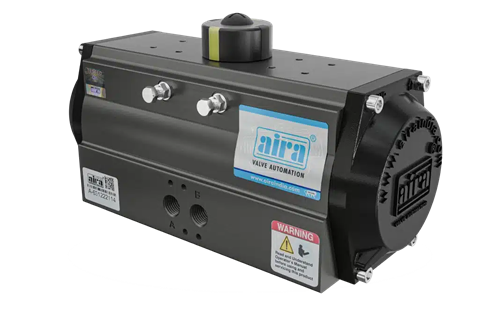When it comes to energy sources for lifting heavy goods or to control high-pressure fluid or to create high-pressurized force, there are only two reliable energy sources pop up in mind and that One is Hydraulics and the second one is Pneumatics. These energy-resources have changed the modern industry’s boundaries and that directly impacts our lifestyle as well. The modern industries without these energy-sources can not be performed as well as they are showing their performance as of now. Both energy sources are very easy to use and do not emit any harmful components into the environment.
What is The Actuator?
The actuator is a device that converts a source of energy into a physical-mechanical motion. The actuator receives the energy and uses it to move something that is connected to it. There are two types of actuators performing in the industries, one is a linear motion actuator used to move an object in a straight line and the second one is a rotary actuator that is used for circular motion. Both types of actuators can be operated by 3 kinds of energy sources: Electric, Hydraulic, and Pneumatic.
The Hydraulic Actuator
The hydraulic actuators are using hydraulic energy to perform the action. The term ‘Hydraulics’ is derived from the Greek word “Hydros” which means water. In the 17th century, hydraulics came into use. The hydraulic energy is based on Pascal’s principle, that is, “pressure applied to a confined fluid at any point is transmitted undiminished throughout the fluid in all directions and acts upon every part of the confining vessel at right angles to its interior surfaces and equally upon equal areas.
As we can understand here, hydraulic Actuators required a fluid in the vessel to operate this. Now let’s check out the pneumatic Actuator.
The pneumatic actuator also follows the same law but in a slightly different way. Here we use compressed air to operate an actuator.
Benefits of Hydraulic Actuator
- The hydraulic actuators can maintain and hold a constant pressure without any additional fluid supply due to the use of condensed fluid.
- Hydraulic actuators can generate very high pressure.
- It can generate High speed.
Problems with Hydraulic Actuator
- The leakage of Hydraulic fluid leads to losses of efficiency and it also creates cleanliness issues.
- It requires many concomitant tools including release valves, motors, pumps, a fluid reservoir, heat exchangers, and noise reduction equipment.
- It requires High maintenance and many components for constant monitoring.
Benefits of Pneumatic Actuators
- Pneumatic actuators are very simple and easy to use
- Pneumatic actuators are often used in a hazardous environment, extremely high-temperature area, Due to using the air is the safest option rather than electric or any chemicals
- It is a low-cost option
- Does not require high maintenance and no issue with the cleanliness of the work area.
Problems with Pneumatic Actuators
- To maintain operating pressure, a compressor requires to be run continuously.
- Requires air filters to prevent any damage to the actuators.
- Requires lubricators to lubricate constantly to prevent and minimize the friction.
We aira euro automation the leading manufacturer of Pneumatic Actuators in India provides you the many variations in pneumatic rotary actuators. We offer single acting spring return pneumatic rotary actuator and Double acting actuators.
Also, read Introduction of Stainless Steel Actuator
